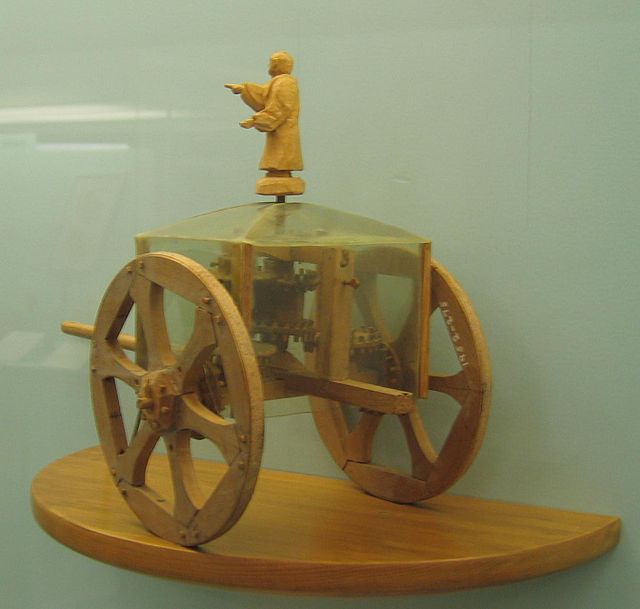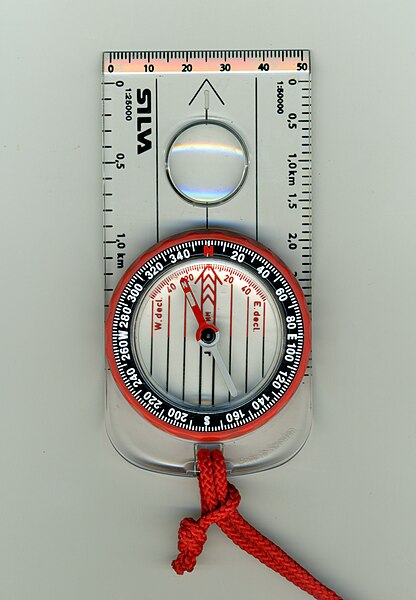The south-pointing chariot was an ancient Chinese two-wheeled vehicle that carried a movable pointer to indicate the south, no matter how the chariot turned. Usually, the pointer took the form of a doll or figure with an outstretched arm. The chariot was supposedly used as a compass for navigation and may also have had other purposes.
Exhibit in the Science Museum in London, England. This conjectural model chariot incorporates a differential gear.
An image of a south-pointing chariot from Sancai Tuhui (first published 1609)
Children's instructive toy chariot in Chinese display at Expo 2005 in Japan
An illustration of a differential between the drive shaft (at bottom right) and driving wheels of an automobile
A compass is a device that shows the cardinal directions used for navigation and geographic orientation. It commonly consists of a magnetized needle or other element, such as a compass card or compass rose, which can pivot to align itself with magnetic north. Other methods may be used, including gyroscopes, magnetometers, and GPS receivers.
A modern military compass, with included sight device for aligning
Model of a lodestone compass from Han dynasty
A liquid-filled protractor or orienteering compass with lanyard
Cammenga air filled lensatic compass








